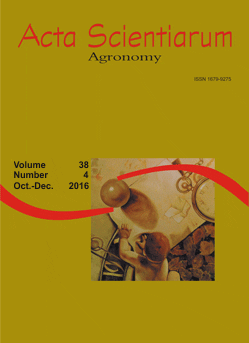<b>QTLs identification for characteristics of the root system in upland rice through DNA microarray
Resumo
The aim of this work is the construction of a genetic map and identification of quantitative trait loci (QTLs) that control characteristics of the root system of rice. We evaluated a F2:3 population composed of 150 families from the cross between the varieties IAC 165 × BRS Primavera. Genotyping was performed in the F2 population using 3,742 SNP (Single Nucleotide Polymorphism) markers. The evaluation of the root system in the F3 population was performed through a large-scale phenotyping method based on image generation with a CI-600 root scanner and on quantification through the WinRhizo® software. The experiment was arranged in a randomized block design with three replications performed under greenhouse. The variables analyzed were root length, root surface area and root volume at the depths of 5 to 25 cm and 25 to 45 cm. The SNP markers analysis allowed the construction of the genetic map with a full length of 1424 cM. The linkage group with the largest coverage area was number 3 with 270 cM (100 SNPs), followed by linkage group 1 with 249 cM (170 SNPs) and linkage group 2 with 163 cM (99 SNPs). The genetic analysis allowed the detection of QTLs for all the characteristics.
Downloads
DECLARAÇÃO DE ORIGINALIDADE E DIREITOS AUTORAIS
Declaro que o presente artigo é original, não tendo sido submetido à publicação em qualquer outro periódico nacional ou internacional, quer seja em parte ou em sua totalidade.
Os direitos autorais pertencem exclusivamente aos autores. Os direitos de licenciamento utilizados pelo periódico é a licença Creative Commons Attribution 4.0 (CC BY 4.0): são permitidos o compartilhamento (cópia e distribuição do material em qualqer meio ou formato) e adaptação (remix, transformação e criação de material a partir do conteúdo assim licenciado para quaisquer fins, inclusive comerciais.
Recomenda-se a leitura desse link para maiores informações sobre o tema: fornecimento de créditos e referências de forma correta, entre outros detalhes cruciais para uso adequado do material licenciado.




















































